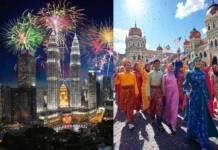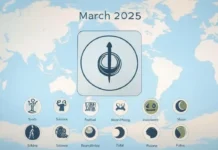Sri Lanka’s National Day, celebrated annually on February 4th, holds immense significance as it marks the day the island nation gained independence from British colonial rule in 1948. This day is a moment of national pride for Sri Lankans, as they commemorate their freedom and reflect on the nation’s history, cultural heritage, and achievements. National Day is not only a celebration of independence but also a time for Sri Lankans to come together in unity, strengthen their patriotism, and promote peace and prosperity across the island. From military parades to cultural performances, the National Day festivities in Sri Lanka are a rich display of national pride and heritage. In this article, we will explore the history, significance, celebrations, and the spirit behind Sri Lanka’s National Day.
Key Details
| Details | Information |
|---|---|
| Date & Day | February 4th |
| Organizing Body | Government of Sri Lanka |
| Type of Observance | National |
| Best Hashtag | #SriLankaNationalDay, #IndependenceDay, #SriLankaPride, #SriLankanUnity |
History and Origin
Sri Lanka’s National Day commemorates the country’s hard-won independence from British colonial rule, which had lasted for over 140 years. Prior to independence, Sri Lanka, then known as Ceylon, was under British control, and its resources, economy, and political structure were heavily influenced by the colonial rulers. After years of political struggle and calls for self-rule, Sri Lanka finally gained independence on February 4, 1948, following the Ceylon Independence Act, passed by the British Parliament.
On this day, Sri Lanka’s first Prime Minister, Don Stephen Senanayake, took office and led the country towards self-governance. The National Day marks not only the political freedom from colonial rule but also the cultural and social empowerment of the Sri Lankan people. The day is an opportunity to remember the sacrifices made by national leaders and the struggles faced by Sri Lankans in the quest for freedom.
Importance and Objectives
The National Day of Sri Lanka holds deep meaning as it marks the triumph of the nation’s freedom and sovereignty. The primary objective of this day is to celebrate the independence achieved by the country and promote a sense of national unity. It is a reminder of the collective effort of all Sri Lankans, regardless of ethnicity or religion, in securing the country’s independence.
Another key objective is to instill national pride and solidarity among citizens, fostering a spirit of reconciliation and progress. National Day also provides an opportunity for the Sri Lankan government to highlight the country’s growth, achievements, and its future aspirations, particularly in areas like education, infrastructure, and international relations.
How It Is Celebrated
Sri Lanka’s National Day is celebrated with grandeur and patriotism, marked by several key events and ceremonies. Here’s how the day is typically observed:
- Flag Hoisting Ceremony: The National Day celebrations begin with the ceremonial hoisting of the Sri Lankan flag at the Independence Square in Colombo, the nation’s capital. The flag is raised with great pride, accompanied by the singing of the national anthem, “Sri Lanka Matha”.
- Military Parade and Cultural Performances: A highlight of the celebrations is the military parade, which showcases Sri Lanka’s defense forces, including the army, navy, and air force. The parade often includes a display of modern military equipment, marching bands, and impressive formations. Additionally, traditional cultural performances, such as dances and music, are organized to reflect Sri Lanka’s rich cultural heritage.
- Governmental Addresses and Speeches: On National Day, the President and other senior government officials deliver speeches that focus on the country’s achievements, progress, and the challenges ahead. The speeches often emphasize unity, peace, and the importance of working together for the nation’s development.
- Public Festivities: Across the country, the day is marked with local celebrations. In schools, students perform cultural dances, dramas, and songs related to the country’s history and independence. Various events like sports competitions, exhibitions, and charity drives are also held in honor of National Day.
- Lighting of Homes and Public Buildings: In the evening, Sri Lankans decorate their homes and public spaces with lights, creating a festive atmosphere across the country. Buildings, government offices, and streets in Colombo are illuminated with bright lights, signifying national pride.
Interesting Facts
- Sri Lanka was the first Asian country to gain independence from British colonial rule in the 20th century, setting an example for other nations in the region.
- The first Prime Minister of Sri Lanka, D. S. Senanayake, is often referred to as the “Father of the Nation” for his pivotal role in the country’s independence.
- The National Day celebrations at Independence Square have been held annually since 1948, marking the birthplace of the nation’s independence.
Quotes or Messages
- “Freedom is the foundation of our prosperity and the bond of our unity.”
- “On National Day, we celebrate not just our past but the future we will build together.”
- “Independence is not just a day, it is a journey of pride, unity, and progress.”
Conclusion
Sri Lanka’s National Day serves as a powerful reminder of the nation’s journey to independence and the continued pursuit of peace, unity, and prosperity. It is a day of celebration for Sri Lankans at home and abroad, reflecting on their rich history, diverse culture, and shared values. As the nation continues to progress, National Day offers an opportunity to unite citizens from all walks of life in a spirit of pride and hope for the future.

























